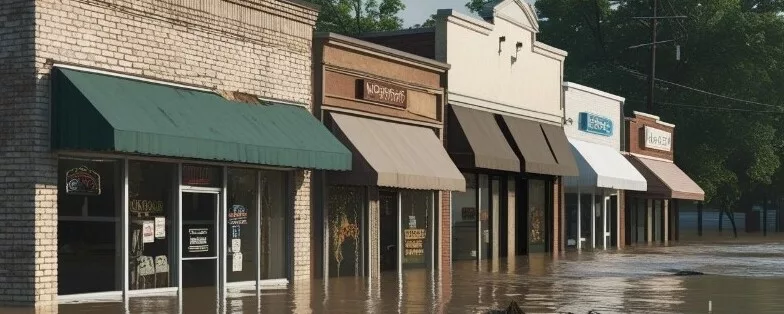Table of Contents

An emergency plan isn’t just about avoiding chaos—it’s also about saving money and time. When you know exactly what needs to be done, you minimize downtime and reduce potential losses. Not to mention, it helps keep your employees safe and informed, which is a big deal for morale and trust.
Let’s not forget the ripple effect an emergency can have on your business operations. Without a plan, you might face prolonged disruptions that not only affect your bottom line but also your reputation. The quicker you can bounce back, the better position you’ll be in to maintain customer trust and loyalty.
Remember, emergencies affect people the most. Whether it’s your team, customers, or even you as the business owner, being prepared can make all the difference in how everyone responds and recovers. It’s not just about having a checklist—it’s about creating a framework that protects and guides everyone involved.
Identifying Potential Risks and Hazards
Navigating the landscape of potential risks is a crucial step for any small business. Having a keen eye for both obvious and subtle hazards makes a huge difference in building a strong emergency plan. Recognizing these risks isn’t just a one-time job; it’s a continuous process that needs your attention and occasionally your creativity.
Here is a more detailed Potential checklist. While it isn’t exactly comprehensive , (that would be too much for this article) nor is meant to be legal advice, (as with all emergency planning you must tailor your plan to fit your needs), It’s a pretty good start:
Checklist for Small Business Disaster Recovery Plan
I. Risk Assessment:
- Identify Potential Threats: List all potential natural (e.g., floods, earthquakes, hurricanes, wildfires) and technological (e.g., power outages, cyberattacks, equipment failure) disasters that could impact your business.
- Analyze Vulnerabilities: Determine which aspects of your business are most vulnerable to each identified threat. Consider your location, infrastructure, data storage, and supply chain.
- Assess Impact: Evaluate the potential financial, operational, and reputational consequences of each disaster scenario.
II. Data Backup and Recovery:
- Regular Backups: Establish a system for regularly backing up all critical data (customer information, financial records, operational data) to a secure offsite location (cloud storage, external hard drive).
- Data Recovery Plan: Develop a detailed plan for restoring data in the event of data loss or corruption. Test your recovery plan regularly.
- Cybersecurity Measures: Implement strong cybersecurity protocols to protect against cyberattacks, including firewalls, antivirus software, and employee training.
III. Business Continuity Planning:
- Identify Critical Functions: Determine which business functions are essential for continued operation during a disaster.
- Alternative Work Arrangements: Develop plans for alternative work arrangements (remote work, temporary relocation) to ensure business continuity.
- Communication Plan: Establish a communication plan to keep employees, customers, and suppliers informed during and after a disaster.
- Supplier Relationships: Diversify your supplier base to mitigate risks associated with supply chain disruptions.
IV. Physical Security:
- Building Security: Implement security measures to protect your physical premises from damage or theft (e.g., security systems, fire suppression systems).
- Equipment Protection: Protect valuable equipment from damage (e.g., surge protectors, backup generators).
- Inventory Management: Maintain accurate inventory records to facilitate efficient recovery efforts.
V. Insurance and Financial Resources:
- Insurance Coverage: Review your insurance policies to ensure adequate coverage for various disaster scenarios (e.g., business interruption insurance, property insurance).
- Emergency Funds: Establish an emergency fund to cover expenses during the recovery period.
- Financial Assistance: Research available government assistance programs and private sector resources.
VI. Post-Disaster Recovery:
- Damage Assessment: Conduct a thorough assessment of the damage caused by the disaster.
- Restoration and Repair: Develop a plan for restoring and repairing damaged facilities and equipment.
- Customer Communication: Communicate with customers to inform them of any service disruptions or delays.
- Employee Support: Provide support to employees affected by the disaster.
- Lessons Learned: After the disaster, review your recovery plan and identify areas for improvement.
Creating a risk assessment checklist let’s you organize and visualize potential hazards in a clear and systematic way. This tool not only aids in focusing on what needs immediate attention but also helps you track changes over time. An evolving checklist means you’re always tackling what’s most pertinent and protecting your business from various angles.
Balancing data with intuition strengthens your approach. While analytics offer concrete evidence, trusting your gut can sometimes reveal less apparent risks. Encourage your staff to voice any concerns they might have as they often notice things leaders might miss. Together, you can form a dynamic, well-balanced view of where potential threats lie.
Developing a Comprehensive Emergency Response Plan

Crafting an emergency response plan takes more than just filling out a template. It’s about designing a blueprint that’s tailor-made for your business. Think of it as your business’s playbook when things go haywire. Your plan should clearly outline the steps to handle various situations, ensuring everyone knows their role in keeping the business steady.
Detailing roles and responsibilities is vital. Everyone in your team should know what they’re supposed to do, and who to report to during an emergency. A clear chain of command and defined duties mean your response is quick and coordinated, minimizing chaos and confusion.
Incorporate strategies for maintaining business continuity. This includes having backup solutions like alternate suppliers or remote work setups to keep operations running even if the main site is compromised. Having a plan for disaster recovery, like data backups and restoration procedures, ensures you can bounce back swiftly.
Utilize technology to boost your response capabilities. Tools like mass communication systems help you quickly notify employees and stakeholders. Cloud-based solutions ensure access to important data isn’t hindered by physical disruptions. These technological aids act as lifelines, keeping your operations informed and agile.
Communication is the linchpin of an effective emergency plan. Everyone, from employees to customers, should have a clear understanding of how the business will manage emergencies. Transparent communication builds trust and helps maintain calm even when everything around seems unstable.
Training and Involving Your Team for Effective Action

Getting your team onboard with emergency plans isn’t just extra work for them; it’s about making sure everyone feels equipped and ready for anything. Training isn’t a one-off event—it’s an ongoing commitment to preparedness and teamwork.
Regular drills and practice sessions make sure everyone knows exactly what to do when an emergency hits. Just like a fire drill at school, these sessions help remove panic from the equation, as your team becomes accustomed to acting instinctively and efficiently.
Every employee plays a vital role in the company’s safety net. Encourage participation and feedback as they can offer valuable insights on the practicality of your plan. Involvement at all levels fosters a culture where everyone is looking out for one another and actively participating in keeping the workplace safe.
Build a sense of readiness and responsibility with clear communication. When you share details about potential risks and emergency procedures, it helps instill confidence within your team. It shows that you’re all in this together, taking shared responsibility for the company’s safety.
Creating a culture around preparedness isn’t just about the drills and documents. It’s about fostering an environment where everyone feels part of the mission to safeguard their workplace. With a strong, informed team, your business stands a much better chance of navigating any crisis smoothly.
Evaluating and Updating Your Emergency Plan Regularly

Keeping an emergency plan static doesn’t cut it in a world where change is constant. Regular evaluation and updates ensure your plan stays relevant and effective. As your business evolves, so do the challenges it may face. Ensuring your plan reflects these changes is key to maintaining readiness.
Periodic reviews of your emergency strategy help you spot weaknesses. Checking for any areas that might need tweaking ensures you’re not caught off guard by unexpected scenarios. It’s all about making sure every angle is covered and nothing is left to chance.
Utilizing tools and metrics can offer insights into how well your plan performs in a real situation. Track response times and recovery capabilities to identify which parts of your plan need bolstering. These insights not only improve immediate responses but also enhance long-term resilience.
Learning from past experiences—whether from drills or actual incidents—is invaluable. Use these lessons to update protocols and strategies, reinforcing what’s working and discarding what’s not. It’s about turning experience into an asset, refining your approach continually.
Embracing a proactive mindset means you’re always a step ahead, ready to tackle whatever comes your way with confidence and clarity. Regular updates keep your emergency plan a living document, evolving alongside your business and reinforcing your commitment to safety and security.

As a blogger myself, I can definitely appreciate the value of being prepared. In the world of business, we often take calculated risks—whether it’s investing time and money into a new project, scaling up, or trying something outside of our comfort zone. But no matter how well we plan, emergencies can and do happen. That’s where having a solid emergency plan in place becomes a game-changer.
Not only does it minimize downtime and reduce financial losses, but it also shows your team, customers, and partners that you’re serious about being resilient. In times of crisis, trust is everything, and a clear, well-thought-out framework can guide everyone through the chaos and back on track faster.
The risks we take in business can sometimes feel like a high-stakes game, but having a plan for the unexpected helps mitigate those risks and ensures you’re not scrambling when things go sideways. Whether it’s an IT failure, a PR disaster, or a natural disaster, being ready means you’re not just protecting your business but also your reputation and relationships.
Shannon,
As someone who has been engaged in critical incident management I found this article really interesting.
It is a strong, actionable guide that mirrors professional recommendations from FEMA, DHS, OSHA, SBA, and NYC emergency management. A few additions, like sector-specific tailoring, continuous improvement strategies, and embedding preparedness in workplace culture, may make it even more compelling. For example, a simple risk matrix may help small business owners identify their main hazards quickly.
Kind regards,
Martin